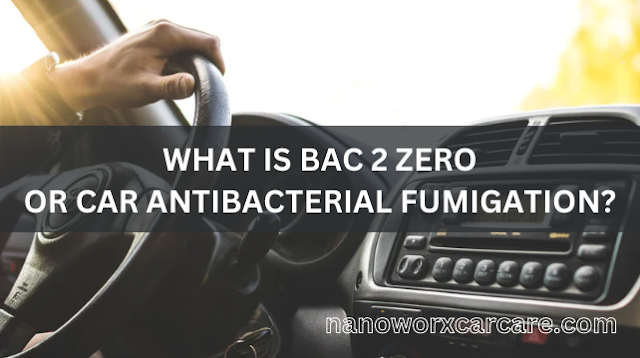How to Choose the Right Ceramic Tint for Your Car
Have you ever stepped into a car sitting under the sun? It’s like walking into an oven. The heat isn’t just uncomfortable—it can damage your car’s interior, causing cracks and fading over time.
That’s why tinting matters. A good tint doesn’t just make your car look sharp—it blocks heat, reduces glare, and protects against harmful UV rays. And when it comes to performance, ceramic tint is the top choice. It lasts longer, keeps your cabin cooler, and won’t mess with your phone or GPS signals.
But here’s the catch: Not all “ceramic” tints are the real deal. With so many options, how do you spot the right one?
Quick Navigation
Understanding Ceramic Window Tint
Ceramic Tint vs. Other Tint Types
What to Look for in a Ceramic Tint
Choosing the Right Ceramic Tint for Your Needs
Professional Installation vs. DIY
Caring for Your Ceramic Tinted Windows
Final Thoughts: Is Ceramic Tint Worth It?
Ceramic Tint vs. Other Tint Types
What to Look for in a Ceramic Tint
Choosing the Right Ceramic Tint for Your Needs
Professional Installation vs. DIY
Caring for Your Ceramic Tinted Windows
Final Thoughts: Is Ceramic Tint Worth It?
Understanding Ceramic Window Tint
Ceramic window tint is engineered using advanced nano-ceramic technology, setting it apart from traditional dyed or metallic tints. It’s made from microscopic ceramic particles embedded within a multi-layered film, offering exceptional heat rejection, UV protection, and durability without interfering with electronic signals.What Makes Ceramic Tint Different?
Unlike dyed tints that fade over time or metalized tints that disrupt signals, ceramic tint delivers high performance without compromise.Here’s how:
Composition of Ceramic Tint
| Composition | Features |
|---|---|
| Nano-Ceramic Particles | These advanced materials block infrared radiation and significantly reduce heat inside your car while maintaining excellent visibility. |
| Optically Clear Layer | Unlike cheaper tints that darken and distort over time, ceramic tint maintains clarity, improving driving visibility day and night. |
| Multiple Protective Coatings | High-quality ceramic tints come with extra layers that provide scratch resistance, oxidation prevention, and long-term durability. |
Key Benefits of Ceramic Tint
| Benefits | Details |
|---|---|
| Superior Heat Rejection | Blocks infrared heat, keeping your car’s cabin much cooler and reducing the load on the air conditioning. |
| Up to 99.9% UV Protection | Shields skin from harmful UV rays and prevents interior fading and cracking. |
| No Signal Interference | Unlike metalized tints, ceramic films don’t interfere with GPS, mobile reception, or keyless entry. |
| Durability | Scratch-resistant and long-lasting, ceramic tint won’t bubble, fade, or deteriorate over time, making it a smart long-term investment. |
Ceramic Tint vs. Other Tint Types
Not all window tints offer the same level of performance. While some provide basic shading and glare reduction, others deliver advanced heat rejection and durability. Here’s how ceramic tint compares to other popular tint types:Dyed Tint
The most affordable option, dyed tint, is made with a layer of dye sandwiched between adhesive and protective layers. It provides basic privacy and glare reduction but lacks effective heat rejection.Over time, it fades, turns purple, and loses its effectiveness. Popular examples include the 3M Obsidian Series and the Llumar ATC Series.
Metalized Tint
This type contains metallic particles that reflect heat, offering better insulation than dyed tints. However, it can interfere with electronic signals, affecting GPS, mobile reception, and keyless entry.
Metalized tints also have a shinier appearance. Well-known options include Solar Gard HP and SunTek High-Performance Series.
Carbon Tint
Carbon tints are more durable than dyed and metalized tints. They contain carbon particles that improve UV and heat protection and reduce infrared heat, making them more effective.
However, carbon tints do not block infrared radiation as effectively as ceramic tints. Examples include 3M Color Stable and SunTek Carbon Series.
Ceramic Tint
The highest-performing tint, ceramic film offers superior heat rejection, 99.9% UV protection, signal stability, and long-term durability. It does not contain dyes or metals, making it fade-resistant and interference-free.
Popular ceramic tint brands include X-Films Ceramic Tint, XPEL Prime XR Plus, 3M Crystalline, and Llumar FormulaOne Stratos.
What to Look for in a Ceramic Tint
Choosing the right ceramic tint isn’t just about picking the darkest shade—it’s about balancing visibility, heat rejection, durability, and quality.First, consider Visible Light Transmission (VLT) options. This determines how dark or light the tint appears. While darker tints provide more privacy, they may not always be legal in certain areas. Checking local regulations before choosing a VLT percentage ensures compliance with tinting laws.
Next, look at heat rejection and infrared blocking. This determines how much heat stays out of the car. The higher the infrared heat rejection, the cooler the car will remain. A ceramic tint with at least 90% infrared heat rejection provides maximum comfort and efficiency.
Then, consider durability and warranty. A premium ceramic tint should last for years without fading or bubbling. Top brands, like X-Films Ceramic Tint, offer warranties ranging from five to twelve years, ensuring long-term performance.
Lastly, find a certified brand and a trusted installer. Many shops sell cheap “nano ceramic” tints at unbelievably low prices, but these are often just rebranded generic films from overseas that lack actual ceramic performance. Choosing trusted brands like X-Films Ceramic Tint and having them installed by professionals like Nanoworx Car Care Services ensures the best results.
Choosing the Right Ceramic Tint for Your Needs
Finding the right ceramic tint isn’t just about picking the most expensive option—it’s about selecting one that matches your driving habits, climate, and legal requirements. A daily driver might prioritize durability and heat rejection, while a weekend car owner may focus more on aesthetics.If you live in a hot climate like the Philippines, prioritize a tint with high infrared rejection to keep your car cooler and reduce the strain on your air conditioning. This ensures a more comfortable ride and prevents interior materials from deteriorating due to prolonged sun exposure.
Aesthetic preference also plays a role. Some drivers prefer a darker shade for privacy and a sleek look, while others want a lighter tint that still provides UV and heat protection without significantly changing the car’s appearance.
Professional Installation vs. DIY
Installing window tint might seem simple, but achieving a close-to-flawless application requires expertise, precision, and the right environment. While DIY kits are available, professional installation offers long-term benefits, making it the better choice for most car owners.| Installation Method | Details |
|---|---|
| Professional Installation | Ensures seamless application with minimal imperfections. Extends tint lifespan and includes warranty-backed assurance. While no installation is ever 100% perfect, professionals work in the best possible conditions to minimize imperfections and ensure a high-quality application. |
| DIY Installation | May save initial costs if done correctly and allows for personal hands-on experience. However, there is a high risk of uneven application, bubbling, or peeling over time. Wasted material and multiple attempts can lead to higher costs in the long run. |
Caring for Your Ceramic Tinted Windows
Proper maintenance ensures your ceramic tint remains effective and looks great for years. Cleaning it the right way prevents damage, while simple precautions help avoid scratches and peeling.When cleaning tinted windows, always use pH-neutral cleaners and soft microfiber cloths. Harsh chemicals, especially ammonia-based products, can break down the tint over time, causing discoloration and deterioration. A gentle approach keeps the film in top condition without compromising its protective properties.
Preventing scratches and fading is just as important. Be mindful of seatbelts snapping against the windows, which can cause minor abrasions on the tint. Regularly checking for edge peeling or air pockets ensures the film remains securely attached, preventing premature damage.
Final Thoughts: Is Ceramic Tint Worth It?
Investing in ceramic tint is wise for drivers prioritizing heat rejection, UV protection, and clear visibility. Ceramic tint provides long-term reliability and performance, unlike cheaper alternatives that fade, bubble, or interfere with electronic signals. It effectively blocks heat, enhances driving comfort, and protects your car’s interior from sun damage.While the initial cost of premium ceramic tint may be higher, it pays off in the long run. Reduced air conditioning leads to better fuel efficiency, while durability ensures you won’t need frequent replacements. A quality ceramic tint isn’t just about aesthetics—it’s a functional upgrade that enhances your driving experience.
If you’re looking for expert installation and high-quality ceramic tint in Tarlac City, Nanoworx Car Care Services provides professional nano ceramic tint installation service backed by experience and a warranty. Choosing the right tint is an investment in both comfort and vehicle longevity—make sure you get it done right.
Frequently Asked Questions
Is ceramic tint easier to see at night?Yes, ceramic tint offers excellent clarity even at night. Unlike traditional dyed tints that create a hazy or darkened appearance, ceramic tint maintains visibility while reducing glare from headlights and streetlights.
How long does ceramic tint last?
High-quality ceramic tints can last 10 to 15 years when properly installed and maintained. Unlike cheaper tints that fade or peel over time, ceramic films are designed to be highly durable and resistant to wear.
What are the disadvantages of ceramic tint?
While ceramic tint is one of the best options available, it comes at a higher cost than dyed or metalized tints. Also, improper installation can lead to bubbles or peeling, so professional application is highly recommended.
Can I also install ceramic tint on my home's windows?
Yes! Ceramic tint is not just for vehicles—it can also be applied to residential and commercial windows. It helps reduce heat buildup inside the home, blocks harmful UV rays, and enhances privacy while maintaining clear visibility from the inside. Here's a full review of X-Films Ceramic Tint installed to a residential property:



